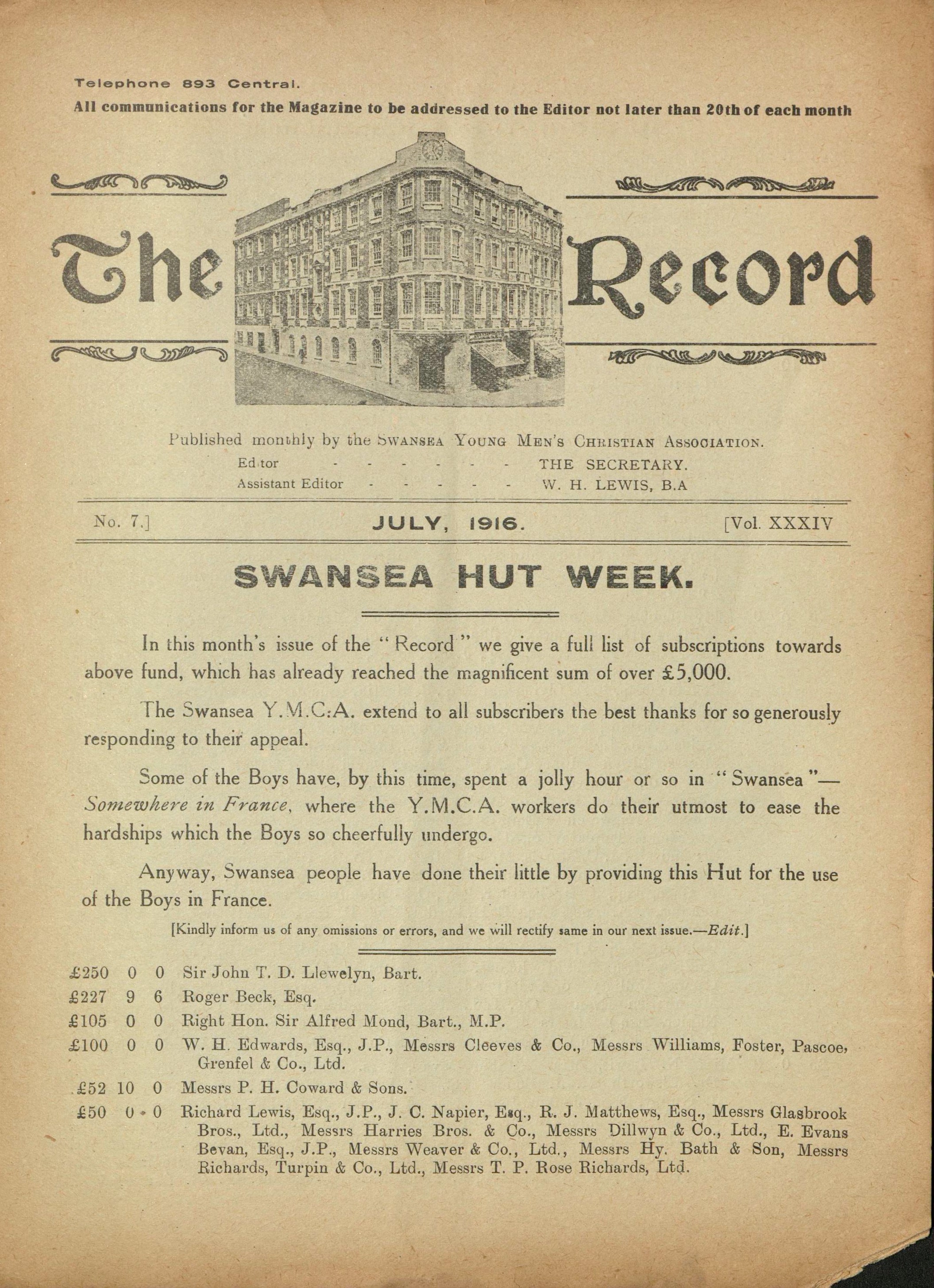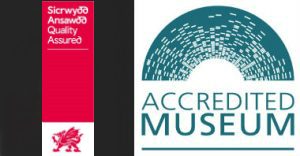Swansea YMCA newsletters early 20th Century

One of the drawbacks with visiting archives is you find a lot more information than you expected. It can result in extra research or a new line of enquiry or both.
The YMCA archive has no newsletters from the 1st WW period but West Glamorgan Archive Service do. There are one hundred names on the YMCA Swansea Roll of Honour (those members who served) and I was hoping I may find some extra bits of information and hopefully identify some of the many Evans, Jones and Thomas etc. Instead I ended up with another seventy individuals to research. Former members that were mentioned but not listed on the Roll of Honour and a whole load of names on the list of junior section members and scouts serving. This no doubt will result in another week or two of research. Further information in future blogs when I look at the WW1 period in more detail.
The bundle of newsletters in archives also had some which overlap with YMCA archives for 1911/12 period. Looking through them again, I made a note of the name Arnt J Morland, who wrote a few letters back to his friends at YMCA Swansea and who was now back residing in Arundel, Norway. The letters themselves were of no significant interest, a little update on how he was getting on, at this point undertaking his national service. The fact that he was involved in a much smaller YMCA association in Arundel and words of encouragement to keep up the good Christian work in Swansea. However, a quick google of his name and the town and this resulted in yet another story of interest to record.
Arnt Jacobson Morland was born on the 23rd June 1888, son of a merchant.
In 1907 he secured some form of Norwegian state sponsored trade placement in Britain and obviously ended up in Swansea. The placement was shipping related but as yet I have been unable to identify with whom exactly.
Judging by the date of the letters he would have been in Swansea for maybe two or three years and being very religious I would guess a member of the Norwegian Church. By 1911 he was definitely back in Norway. The last mention of him is news of his engagement to Miss Thomsen of Arundel.
In 1916 he started his own shipping company, named Agdesidens Rederi, followed by two more companies, Morland Rederi in 1927 and Morland Tankederi in 1930.
Morland became a very prominent citizen of Norway, he chaired the Regional Ship Owners Association and for a number of years was a member of the Executive Committee for Arundel City Council. In 1953 he was elected to the Norwegian Parliament but died in 1957 before the end of his term. Morland was also prominent in the church becoming Vice Chair of the Diocesan Council for Agder.
In 1940 Norway was occupied by the Nazis. A puppet government was installed led by the collaborator Vidkun Quisling, whose name would become a byword for collaborator or traitor. Following the war Quisling was found guilty of murder and high treason and was executed by firing squad on the 24th October 1945.
The resistance in Norway like most countries included both passive and aggressive resistance. One of the passive resistance measures was led by the church. Local church leaders in Norway were employed and paid for by the state. Church leaders therefore refused to take the salaries in protest at the occupation and the collaboration of the Quisling government.
Morland in partnership with Hans Sande, the General Secretary of the Joint YMCA and YWCA in Norway organised the network for raising money for what was effectively a strike fund. Money would be raised and collected to support the local church leaders to enable them to continue to work but refuse their salaries from the Norwegian state.
Morland was arrested on the 24th February 1944 for resistance activities and initially held at the Arkivet building in Kristianstand. Arkivet is Norwegian for archive. Built in 1935 for the local archive service, the building was taken over as Gestapo Headquarters for Southern Norway. It is now a museum to the Norwegian occupation and the names of those killed in concentration camps in Norway are listed on a memorial outside the building.
Moreland was later transferred to Grini Concentration Camp, his prisoner number was 11696. Numbers killed at Grini are unknown but we do know they included British Airborne troops who survived Operation Freshman, the attempt to destroy the Norsk Hydro Heavy Water Plant, vital for any potential development of a hydrogen bomb by the Nazis. The surviving British Airborne troops from the operation were held at Grini before being taken to nearby woods and executed by the Gestapo.
Finally Moreland was transferred to Berg Concentration Camp in February 1945. Berg was a transit camp where many Jews and political prisoners were kept before transfer to one of the death camps in Germany or Eastern Europe. It is possible that he was due for transit but the war at this point was nearing the end and he survived.

